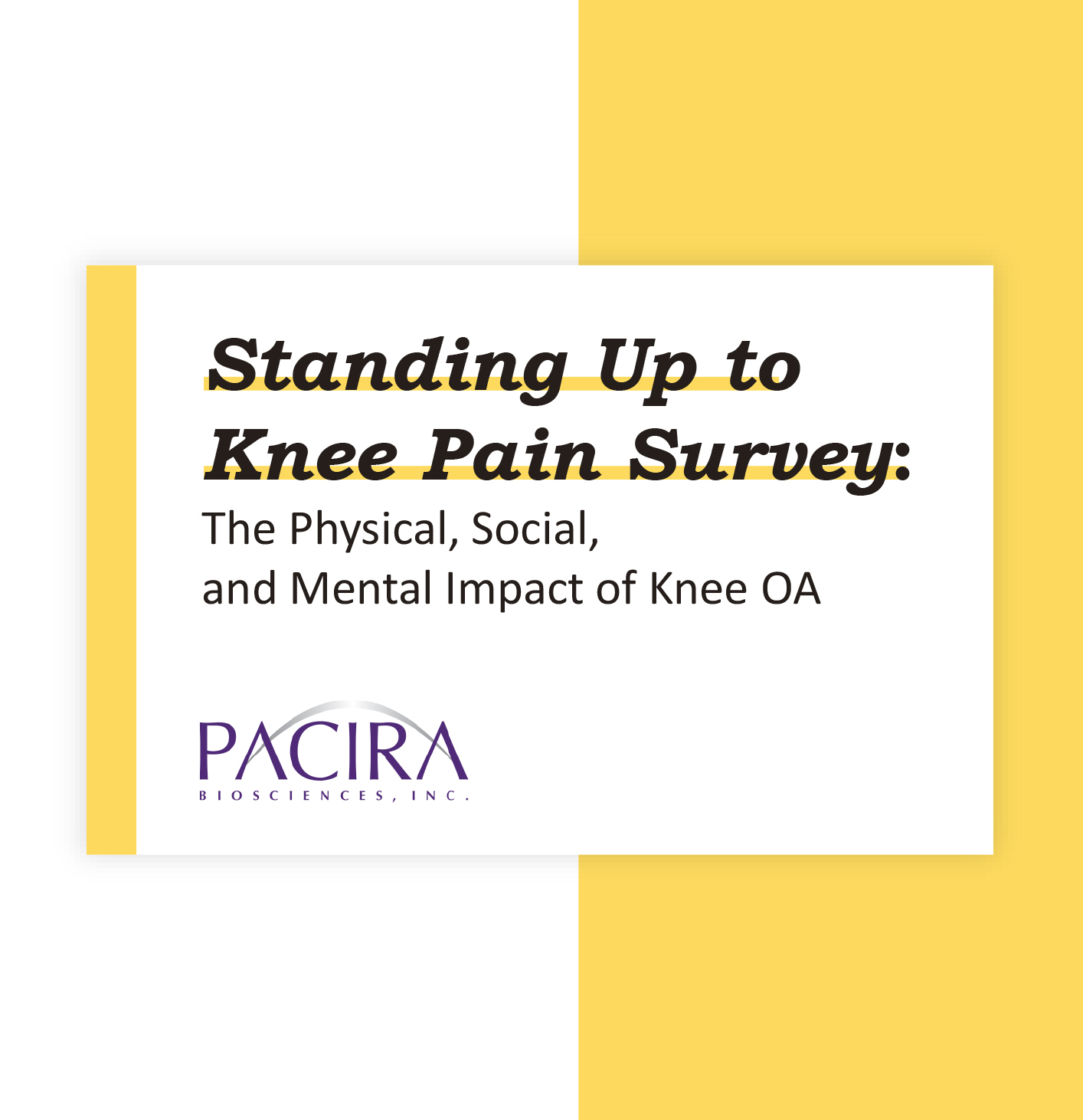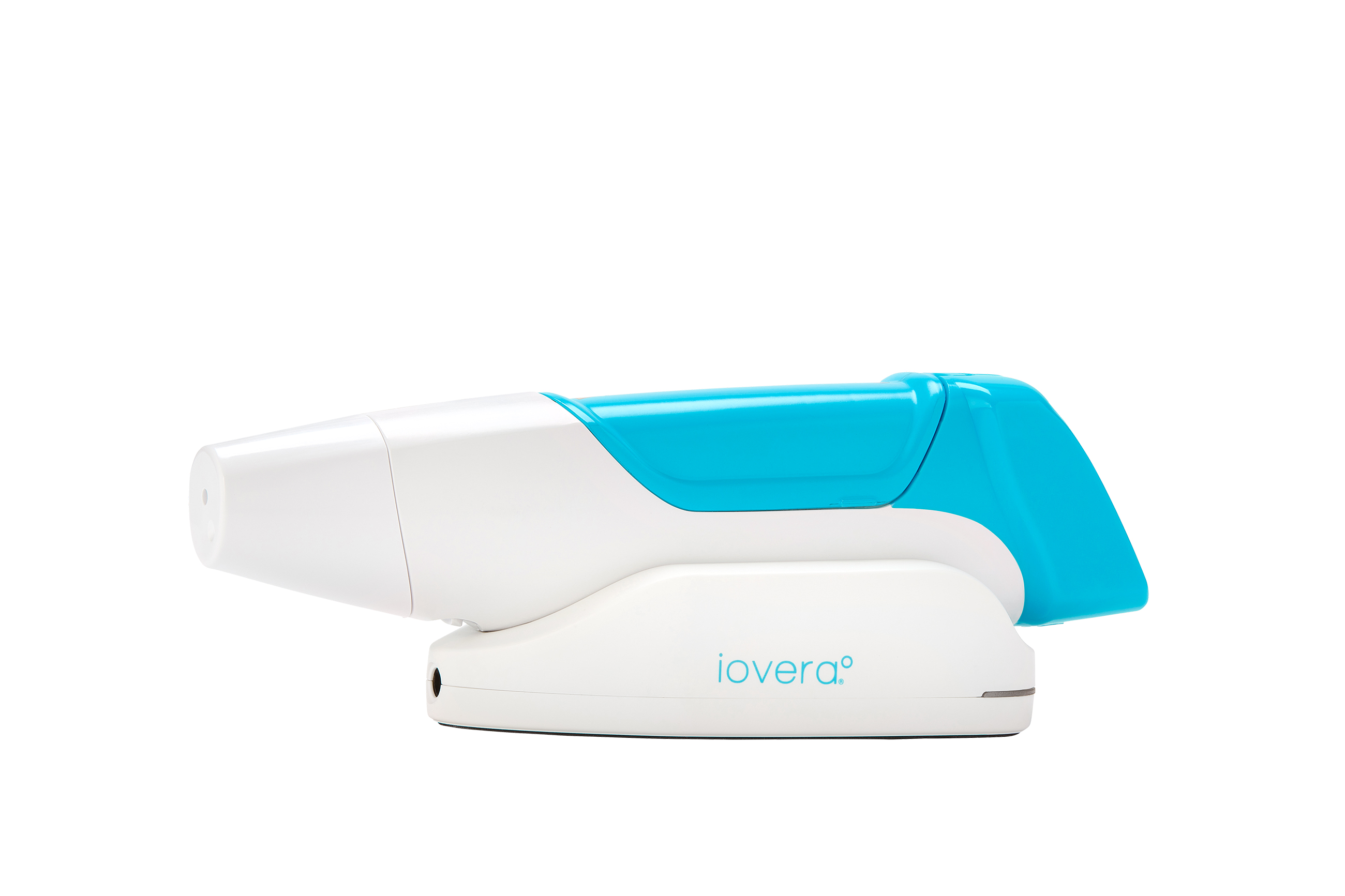New Research Reveals Common Treatments for Knee Pain are Falling Short, Placing Physical, Social, and Mental Burden on Patients
Nearly 60% of patients live in pain for 5+ years and 30% for 10 years or longer
Learn MoreTampa, Fla. November 17, 2022 – Nearly one in four adults in the United States suffers from chronic knee pain. New research shows the impact is widespread, causing physical, social, and mental burdens for patients on a daily basis, while also revealing that more Americans are living for years without adequate pain relief.
The national survey, Standing Up to Knee Pain: The Physical, Social, and Mental Impact of Knee OA, polled 500 U.S. adults who have been treated for chronic knee pain and/or osteoarthritis (OA) of the knee. It found that while 100% of patients have tried some form of treatment to address their pain, a staggering number of people (97%) still report that their daily lives are negatively impacted by their condition. The majority of patients (75%) had trouble climbing stairs and exercising, and more than half reported that knee pain impaired their overall health and fitness. Many also claimed it affected their ability to sleep (49%) and work (38%).
The Social and Mental Toll
The physical limitations being set by chronic knee pain also have considerable downstream social and mental consequences. In fact, most patients (91%) reported missing out on social events and 28% said their everyday mental health was negatively affected by their ongoing pain. The mental impact of knee pain is particularly concerning when coupled with the fact that 45% of patients reported using opioids or prescription painkillers to manage persistent pain. These co-occurring issues can be especially dangerous as patients with mental health challenges are twice as likely to have, or develop, a substance use disorder.
Treatments Falling Short
With a third (32%) of patients suffering with knee pain for over a decade, the list of treatments tried is extensive, and includes over the counter medications (71%), ice/elevation (64%) and physical therapy (57%). Moreover, of the 50% of patients who reported trying injectable steroids or hyaluronic acid gels to manage pain, one-third (36%) said they received eight or more shots.
“This survey illustrates the vast array of negative consequences tied to the detrimental effects of living with inadequately managed pain for an extended period of time. Suffering with long-term knee pain not only has the potential to cause more serious damage or require more invasive procedures – it can also impact patients’ overall quality of life,” said Brian Carr, M.D., an orthopedic surgeon at Las Vegas Concierge Orthopedics. “Thankfully, we can prevent this common cycle from occurring. There are innovative non-opioid treatments that offer immediate, long-lasting relief to address this significant unmet need and enable patients to get back to living life on their terms.”
The Demand for Alternatives
OA of the knee is a chronic, degenerative disease, which means it never goes away and can worsen over time. Because of this, many OA sufferers will require total knee replacement surgery. The survey found that most patients (88%) have concerns about this type of procedure, citing the pain associated with surgery, recovery, and physical therapy as the top worry (69%).
“The good news for patients is today we have effective non-opioid options—including drug-free interventions—to help manage chronic or postsurgical knee pain,” continued Dr. Carr. “In my practice, I have had a great deal of success using an option called iovera° with patients who are suffering from chronic knee pain or those needing a knee replacement. iovera° is a handheld device that uses only focused cold therapy—no medications—to stop nerves from sending pain signals to the brain. The effect is immediate and can last up to 90 days. It can be used as an ongoing pain treatment but also helps tremendously with recovery after a total knee replacement surgery.”
About the Standing Up to Knee Pain Survey
In addition to surveying patients, the Standing Up to Knee Pain survey polled 200 orthopedic surgeons and sports medicine physicians. The survey was conducted by Wakefield Research on behalf of Pacira BioSciences, Inc. in September 2022. For additional information on Standing Up to Knee Pain, and to learn more about the available non-opioid options to treat acute and chronic pain, visit YourXFactor.com.
To learn more about iovera° visit iovera.com.
About Pacira
Pacira BioSciences, Inc. is committed to providing non-opioid options to as many patients as possible to redefine the role of opioids as rescue therapy only. The company is also developing innovative interventions to address debilitating conditions involving the sympathetic nervous system, such as cardiac electrical storm, chronic pain, and spasticity. Pacira has three commercial-stage non-opioid treatments: EXPAREL® (bupivacaine liposome injectable suspension), a long-acting, local analgesic currently approved for infiltration or as an interscalene brachial plexus nerve block in adults for postsurgical pain management; ZILRETTA® (triamcinolone acetonide extended-release injectable suspension), an extended-release, intra-articular, injection indicated for the management of osteoarthritis knee pain; and iovera°®, a novel, handheld device for delivering immediate, long-acting, drug-free pain control using precise, controlled doses of cold temperature to a targeted nerve. To learn more about Pacira, including the corporate mission to reduce overreliance on opioids, visit www.pacira.com.
About iovera°®
The iovera° system is used to destroy tissue during surgical procedures by applying freezing cold. It can also be used to produce lesions in peripheral nervous tissue by the application of cold to the selected site for the blocking of pain. It is also indicated for the relief of pain and symptoms associated with osteoarthritis of the knee for up to 90 days. The iovera° system is not indicated for treatment of central nervous system tissue. Additional information is available at www.iovera.com.
Important Safety Information for iovera°®
The iovera° system should not be used in people with the following conditions:
- Blood that thickens when patient is exposed to cold (cryoglobulinemia), blood appearing in the urine when patient is exposed to the cold (paroxysmal cold hemoglobinuria), skin rash that appears when patient is exposed to the cold (cold urticaria), narrowing of the blood vessels in the hands and feet when patient is exposed to the cold (Raynaud’s disease), and open and/or infected wounds at or near the treatment site
Patients being treated with the iovera° system (a needle-based therapy) may experience certain reactions, including, but not limited to:
- Bruising, swelling, inflammation and/or redness, local pain and/or tenderness, and altered feeling at the site of application
Proper use of the device as described in the User Guide can help reduce or prevent the following reactions:
- In the area(s) where you were treated: damage to the skin from being exposed to cold or heat, darkening or lightening of the skin, and dimples in the skin
- Outside the area(s) where you were treated: muscles may not work or move normally






